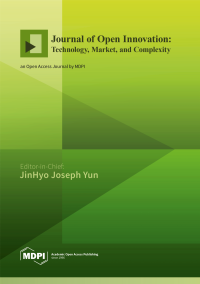Global Challenges of Digital Transformation of Markets (GDTM-2020)
A special issue of Journal of Open Innovation: Technology, Market, and Complexity (ISSN 2199-8531).
Deadline for manuscript submissions: closed (15 June 2021) | Viewed by 95838
Special Issue Editors
Interests: business models; sustainability; firm valuation; technology; digital economy; fintech
Interests: manufacturing processes; digital platforms; industry 4.0; digital economy
Special Issue Information
Dear Colleagues,
As rapid changes are brought on by the advent of breakthrough technologies and by the challenges facing humanity, existing business models are to be consistently updated and reinvented.
In fact, innovative business models need to be adopted, focused on generating novel state-of-the-art products and technologies that have not yet gained wide circulation, and on searching for new markets or marketing opportunities, which would allow selling the goods and services produced in the increasingly digitized economy.
This Special Issue deals with the challenges of digital transformation in logistics and supply chain management, digitization of trade networks and global markets, with a primary focus on business processes and marketing transformation.
In this Special Issue, we bring together experts both from the academic community and the real sector of the economy, providing a platform for exploring the global challenges experienced by regional and global markets in the age of digitization.
Topics include:
- Digital transformation challenges in logistics and supply chain management;
- Digitalization of trade networks and global markets;
- Business processes and marketing transformation in age of digitalization;
- HR management in the digital era.
Assoc. Prof. Dr. Elena de la Poza
Prof. Dr. Sergey E. Barykin
Prof. Dr. Vladimir Badenko
Guest Editors
Manuscript Submission Information
Manuscripts should be submitted online at www.mdpi.com by registering and logging in to this website. Once you are registered, click here to go to the submission form. Manuscripts can be submitted until the deadline. All submissions that pass pre-check are peer-reviewed. Accepted papers will be published continuously in the journal (as soon as accepted) and will be listed together on the special issue website. Research articles, review articles as well as short communications are invited. For planned papers, a title and short abstract (about 100 words) can be sent to the Editorial Office for announcement on this website.
Submitted manuscripts should not have been published previously, nor be under consideration for publication elsewhere (except conference proceedings papers). All manuscripts are thoroughly refereed through a single-blind peer-review process. A guide for authors and other relevant information for submission of manuscripts is available on the Instructions for Authors page. Journal of Open Innovation: Technology, Market, and Complexity is an international peer-reviewed open access quarterly journal published by MDPI.
Please visit the Instructions for Authors page before submitting a manuscript. The Article Processing Charge (APC) for publication in this open access journal is 800 CHF (Swiss Francs). Submitted papers should be well formatted and use good English. Authors may use MDPI's English editing service prior to publication or during author revisions.
Keywords
- digital transformation
- business models
- logistics and supply chain management
- global markets
- marketing transformation
- human resources management
- open innovation
- business model
- open platform
- dynamics






